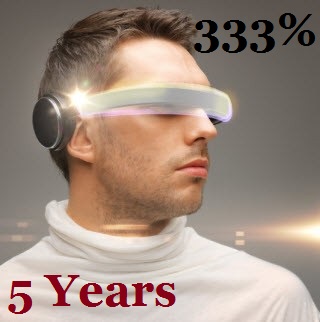This AR technology has been used by TexTales so that it can be woven right into the child’s bedding.
TexTales is a newly launched product out of Eindhoven in the Netherlands, which uses augmented reality for kids worked into sets of bed sheets for children, so that they can bring bedtime stories to life.
The images appear to come alive directly out of the printed patterns on their bedding.
When a tablet or a smartphone is directed at the bed sheets with this augmented reality for kids, the bedding displays three dimensional images of fairy tale characters. When the sheets are purchased, they come with a free accompanying app that gives parents the ability to either play pre-existing stories or to create their own special stories. These can then be played for their children during playtime or before bedtime.
The images that are created on the fabric are recognized by special software using augmented reality for kids.
 When the app is open and the device is aimed at the images on the sheets, the custom made software detects these specific images and activates various elements, allowing parents and children to be able to interact with those images, that appear to move around on the screen.
When the app is open and the device is aimed at the images on the sheets, the custom made software detects these specific images and activates various elements, allowing parents and children to be able to interact with those images, that appear to move around on the screen.
The TexTales app is compatible with devices based on Android 2.3 and higher, as well as those based on iOS 5 and higher. To work with the AR technology, they have to be equipped with a rear-facing camera. This product was developed based on another project that had been previously pursued by Kristi Kuusk. It is considered to be a collaborative venture among studio Toer, Unit040, Johan van den Acker Textielfabriek, and the Eindhoven University of Technology. It is also part of a greater project which is known as CRISP Smart Textile Services.
In order to be able to raise the funds to create the sheets with augmented reality for kids, and to be able to develop the project so that it would be possible to create more characters and stories, TexTales launched a Kickstarter campaign. This allowed them to custom create the software necessary for these added elements.
The expanding use of both smart phones and smart glasses are predicted to expand the use of the tech.
According to a recent report released by Juniper Research, there are an estimated 60 million people worldwide who use augmented reality applications on a regular basis.
This report also stated that this figure should jump to 200 million by the year 2018.
It was also noted in the report that augmented reality has the opportunity to take off from its current focus in the gaming and navigation environments and will expand into much greater everyday use purposes. The publication stated that “Initial innovations will stem from games, such as Google Ingress, but the technology will expand to include lifestyle and fitness apps.” It also added that there is a chance for “paradigm shifting utilization of AR within social media, potentially breaking the digital-physical wall with potential future uses allowing a digital representation of a person to appear in the users surroundings.”
By the year 2018, games and location based augmented reality will represent under half of the tech’s usage.
 Juniper believes that by that time, augmented reality will have expanded greatly into areas such as healthcare and lifestyle. It could help with remote doctor visit experiences, as well as to help to enhance the remote shopping experience as well as that through social networks. It has also seen a potential future in enterprise, such as providing technical specs for aircraft mechanics and drawings to overlay on machinery for engineers to use for building new technologies.
Juniper believes that by that time, augmented reality will have expanded greatly into areas such as healthcare and lifestyle. It could help with remote doctor visit experiences, as well as to help to enhance the remote shopping experience as well as that through social networks. It has also seen a potential future in enterprise, such as providing technical specs for aircraft mechanics and drawings to overlay on machinery for engineers to use for building new technologies.
Some companies have already started to use augmented reality for this type of project, such as SpaceX and Elon Musk, which use AR tech for designing new components for rockets. That said, the majority of apps that use this technology, such as Layar, provide content overlaid on paper to make it “come to life” with such elements as added data and video. It was pointed out that most of them are ad funded. Juniper also pointed out that there are a few pay-per-download and some that are freemium.
Equally, Juniper feels that the augmented reality industry will only benefit from the increasing dominance of Android, as it will help to improve AR’s current situation which is seen as rather buggy and fragmented.
 When the app is open and the device is aimed at the images on the sheets, the custom made software detects these specific images and activates various elements, allowing parents and children to be able to interact with those images, that appear to move around on the screen.
When the app is open and the device is aimed at the images on the sheets, the custom made software detects these specific images and activates various elements, allowing parents and children to be able to interact with those images, that appear to move around on the screen.
 Juniper believes that by that time, augmented reality will have expanded greatly into areas such as healthcare and lifestyle. It could help with remote doctor visit experiences, as well as to help to enhance the remote shopping experience as well as that through social networks. It has also seen a potential future in enterprise, such as providing technical specs for aircraft mechanics and drawings to overlay on machinery for engineers to use for building new technologies.
Juniper believes that by that time, augmented reality will have expanded greatly into areas such as healthcare and lifestyle. It could help with remote doctor visit experiences, as well as to help to enhance the remote shopping experience as well as that through social networks. It has also seen a potential future in enterprise, such as providing technical specs for aircraft mechanics and drawings to overlay on machinery for engineers to use for building new technologies.